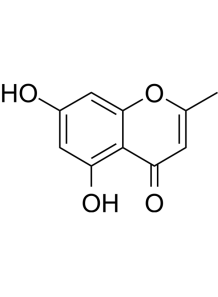Dihydroxy Methylchromone (DHMC, Noreugenin)
Cosmetics
Code: 128978
a small plant-derived chromone that combines strong antioxidant/photoprotective power with retinol-like collagen-stimulation, hyaluronic-acid boosting, barrier-strengthening and anti-inflammatory (PDE-4-inhibitory) activity
Cart
No products
Subtotal:
0.00
Total
0.00
THB



